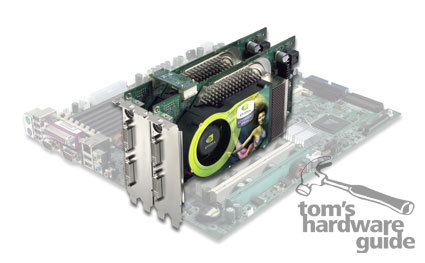NVIDIA Takes a Walk on the SLI Side with Double Graphics Processing
Introduction
The graphics card market is a harsh place. One day, a given company can be top dog, the next it's just a footnote in the history books, only existing through patents and intellectual property other companies use. This is exactly what happened with former consumer 3D graphics innovator 3dfx, whose know-how was bought by former rival NVIDIA.
Six years ago, if you'd mentioned the three letters SLI to a gamer, you would have been greeted with wide eyes and wild excitement. Why? SLI (scan line interleave) was a new concept that promised no less than improved gaming performance and playable frame rates at what was then an unheard of 1024x768 resolution with a Z-buffer enabled by combining the rendering power of two Voodoo 2 add-in cards. Since then, we haven't seen anything of the sort commercially available.
Good old days. Two Voodoo2 3d add-on cards in SLI configuration.
However, it seems that this may change very soon. With the introduction of PCI Express, using two graphics cards in parallel is once again a possibility, and surely many a gamer's dream. Back in March, we already speculated on such possibilities in our PCI Express article.
NVIDIA recognized the potential of the new bus interface early on and has incorporated something akin to 3dfx's SLI functionality into its newest graphics processor, the NV40, a.k.a. GeForce 6800. PC builder Alienware also presented a working dual-card solution of its own at this year's E3, although it differs from NVIDIA's SLI in several points.
The new SLI (Scalable Link Interface ) solution by NVIDIA.
Get Tom's Hardware's best news and in-depth reviews, straight to your inbox.


